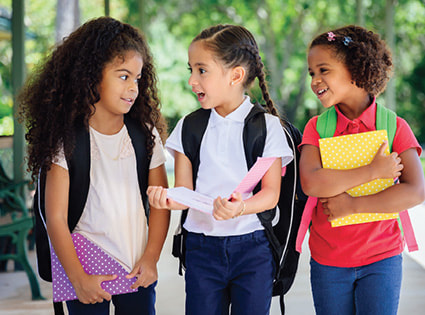Myths about bilingualism in children
There are many myths surrounding children who grow up bilingual. Some think that it is bad for language development or that it can damage cognitive abilities. However, the opposite is true. There is a lot of research that shows the effects of bilingualism on children and which methods are better for the acquisition of both languages and the conclusion is that it is, in fact, a positive practice.
There are many types of bilingualism. The idea of bilingualism is so complex that it is impossible to talk about it without delimiting it. On this occasion, I want to specifically discuss early and simultaneous bilingualism that occurs when children learn at home or with the family. Early bilingualism happens until the age of 12. In this case, children learn both languages before puberty and continue using them frequently and actively in their daily lives. In a similar way, simultaneous bilingualism refers to children that learn two languages at the same time and not one after the other. Many academic sources talk about the most common myths and show why they are false. In this article, I present the most frequent ones and explain the truth behind these myths. Myth: “Bilingualism can slow down language learning in children.” Fact: There is a lot of research that shows that bilingual children learn both languages at the same speed as their monolingual counterparts. According to François Grosjean, a well-known author on the subject, in the event that bilingual children show linguistic problems such as dyslexia (which is not the same as learning slowdown), it is not because they are bilingual. Monolingual children have linguistic problems with the same frequency. Myth: “Learning two languages confuses children and impairs their cognitive ability.” Fact: It is a rather common notion that children only have room for one language in their brain. However, a study by Kenji Hakuta in 1985 shows that bilingual children have better auditory language skills than monolingual children and stronger cognitive flexibility. Myth: “The language spoken at home will have a negative effect on language learning at school.” Fact: Grosjean argues the opposite. A language can work as a linguistic basis for learning aspects of other languages. Maintaining the language spoken at home helps to develop the new language at school. Myth: “Bilingual children always mix their languages and make mistakes.” Fact: Children learn that when they are with a monolingual person, they should only use one language. They only mix languages when there are other bilinguals, but this is not bad. If they are fluent in both languages, they can change quickly and communicate functionally. Being bilingual during childhood helps the brain to be more “mobile”. Bilingual children can jump between activities with no problem because their brains are used to switching between two languages without interference. This process is called attention control. In fact, being bilingual strengthens the brain in all areas of thought. Bilingual children have more mental flexibility and are better with memory and attention. This practice of switching between two languages is like an exercise, and with more practice, it becomes strengthened. All the myths mentioned above are just that: myths. Empirical evidence denies that bilingualism in children is harmful. Instead, it shows that it is beneficial. Therefore, it is important to be cautious with the information we share and consider bilingualism as an alternative. |
